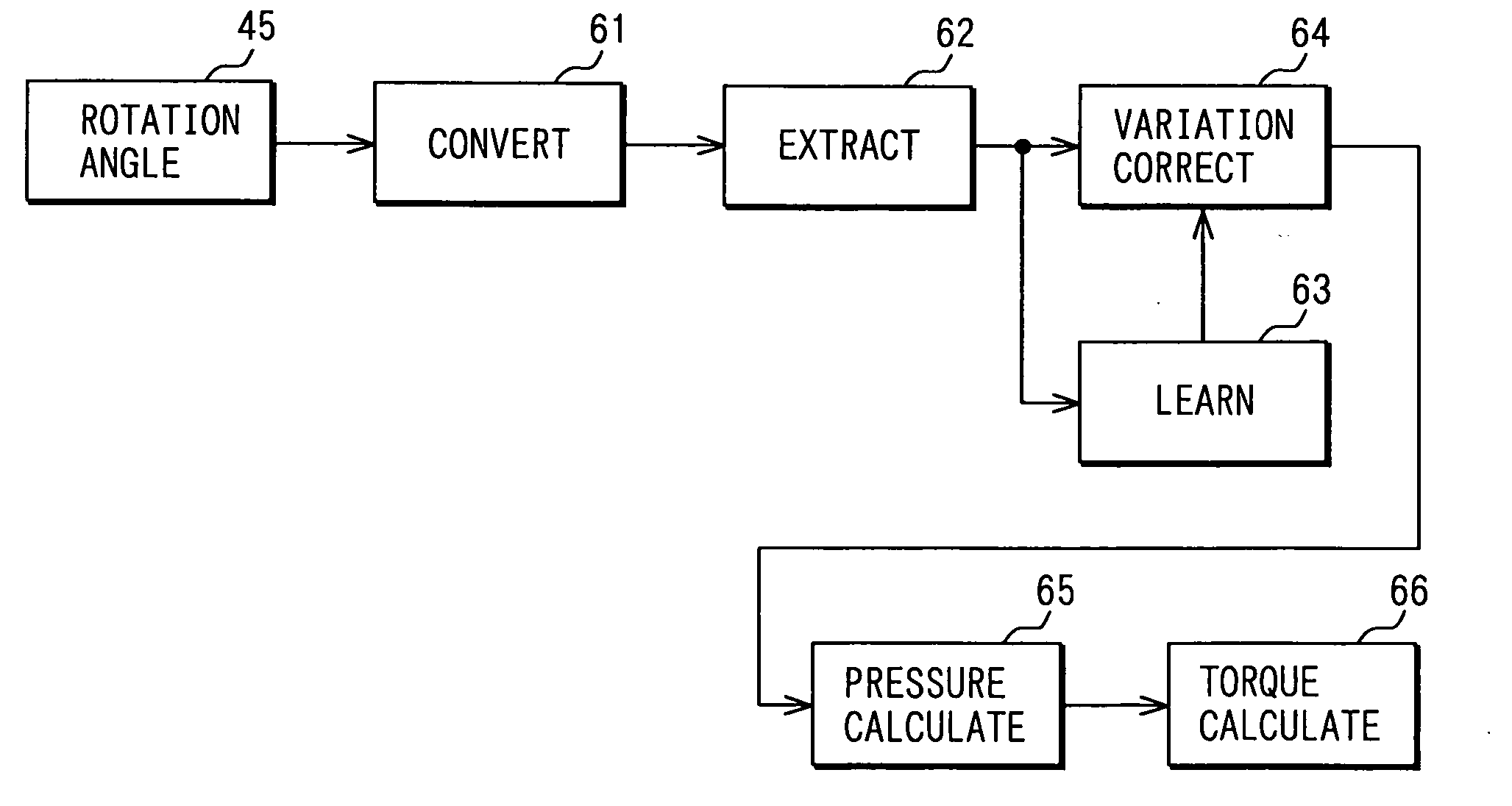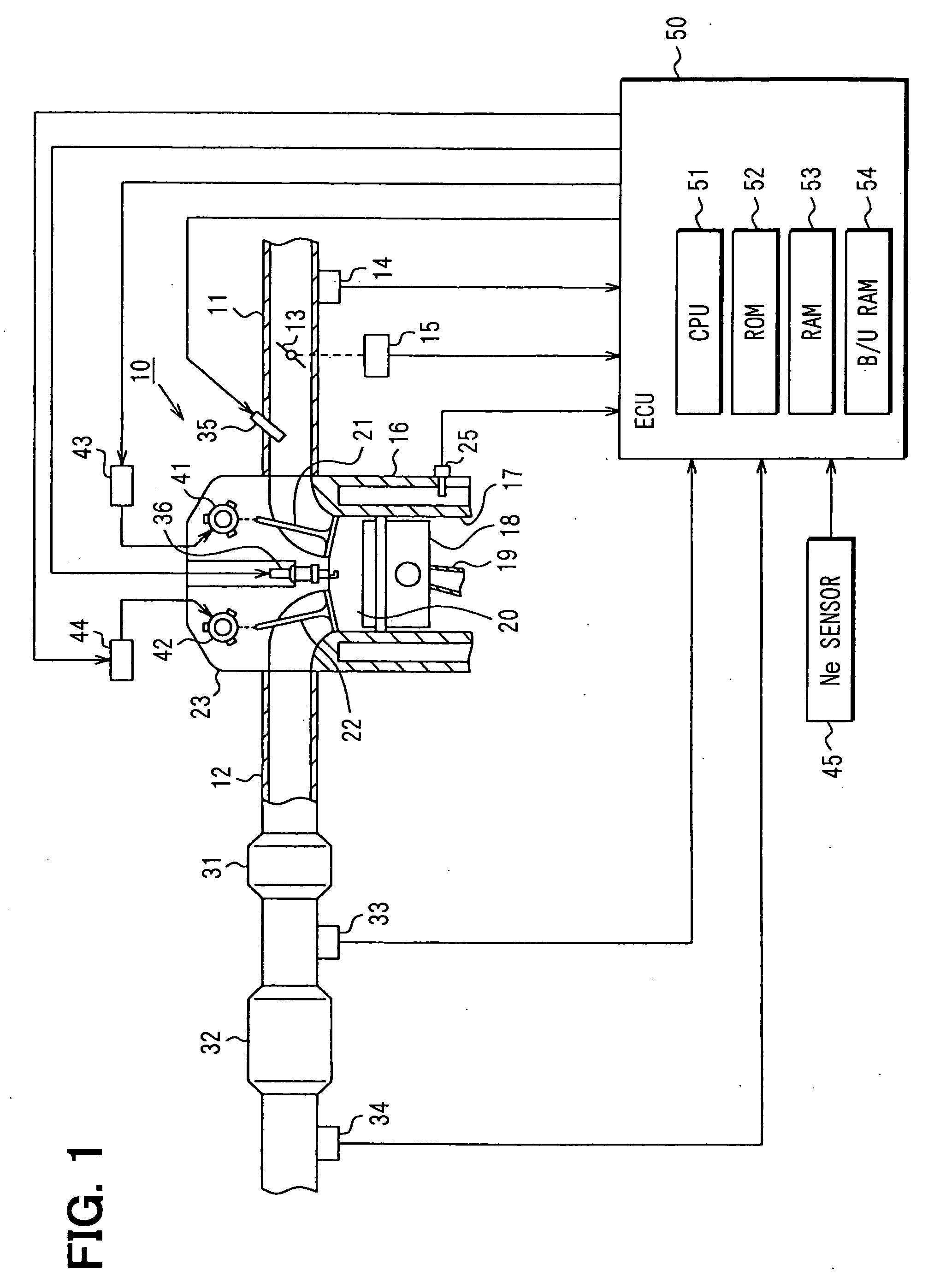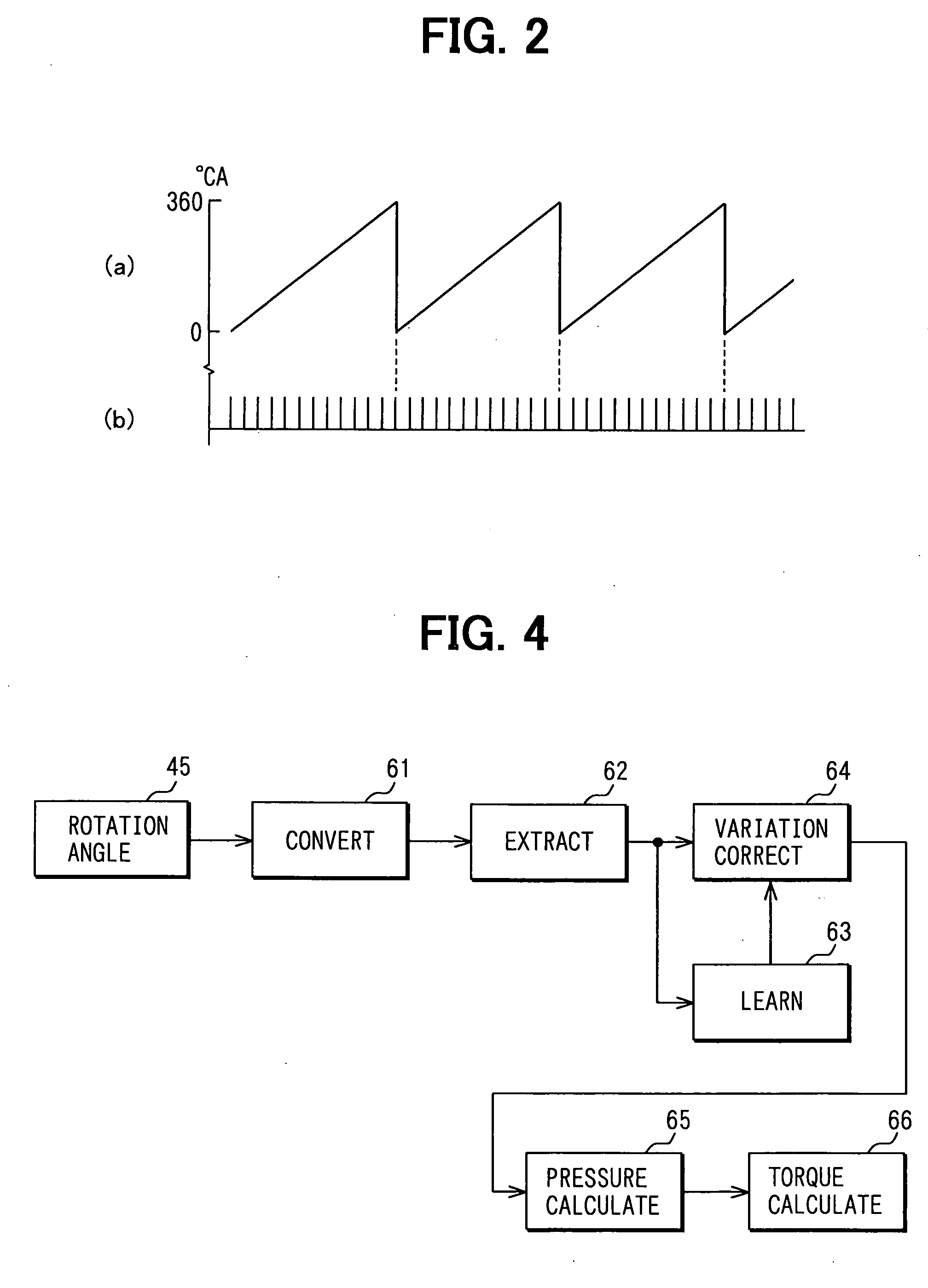Engine combustion state detection device
a detection device and combustion state technology, applied in the direction of machines/engines, electric control, instruments, etc., can solve the problems of difficult differentiation between normal combustion states and abnormal combustion states, and reducing the detection accuracy of combustion states, etc., to achieve accurate detection of combustion states and high rotation range
- Summary
- Abstract
- Description
- Claims
- Application Information
AI Technical Summary
Benefits of technology
Problems solved by technology
Method used
Image
Examples
Embodiment Construction
[0035] In FIG. 1 showing an embodiment, an engine control system is for a four-cycle multi-cylinder internal combustion engine 10 of spark-ignition type. In the control system, an electronic control unit (ECU) 50 controls fuel injection quantities and ignition timing.
[0036] The engine 10 has an intake pipe 11 and an exhaust pipe 12, which are connected to intake ports and exhaust ports, respectively. The intake pipe 11 is provided with a throttle valve 13 linked to an accelerator pedal, and disposed with an air flow meter 14 for detecting the quantity of intake air. The degree of opening of the throttle valve 13 is detected by a throttle sensor 15. The full closing of the throttle can also be detected by the sensor 15.
[0037] A cylinder 17 is formed in a cylinder block 16, and a piston 18 is disposed within the cylinder 17. The piston 18 is coupled to a crankshaft (not shown) through a connecting rod 19. A combustion chamber 20 partitioned by the cylinder block 16 and a cylinder he...
PUM
 Login to View More
Login to View More Abstract
Description
Claims
Application Information
 Login to View More
Login to View More - R&D
- Intellectual Property
- Life Sciences
- Materials
- Tech Scout
- Unparalleled Data Quality
- Higher Quality Content
- 60% Fewer Hallucinations
Browse by: Latest US Patents, China's latest patents, Technical Efficacy Thesaurus, Application Domain, Technology Topic, Popular Technical Reports.
© 2025 PatSnap. All rights reserved.Legal|Privacy policy|Modern Slavery Act Transparency Statement|Sitemap|About US| Contact US: help@patsnap.com



